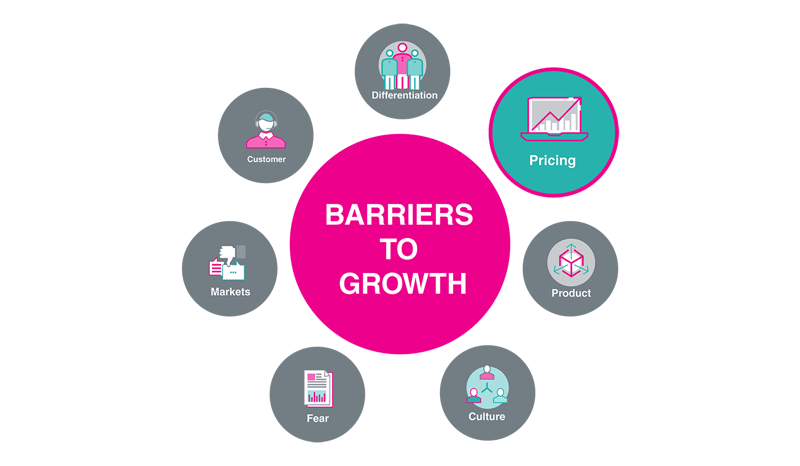Welcome to our new series on lead generation, Lead Gen in 10. We will be sharing articles weekly with you that are practical, hands-on exercises that will improve every aspect of your lead generation process.
In this first article, we’ll cover how to define an ideal lead for your business. And how to get marketing and sales to agree on that definition. This exercise is pretty straightforward and won’t take you long, but you will need some of your marketing and sales leaders’ time.
Why you need sales & marketing on the same page
Sales and marketing don’t always see eye to eye. It has been shown that companies with strong sales and marketing alignment generate 208% more revenue from their marketing than companies without.
Often the Sales and Marketing Teams are not aligned and you will get sales blaming marketing for providing them with dud leads - marketing thinks they’re providing great potential customers, but sales can’t close them.
So what is the solution and how can they both align?
Both your sales and marketing teams need to:
- Define your ideal leads
- Get buy-in and agreement
- Measure results and improve over time
- Contact - a new contact that’s added to your CRM database (assuming you have one - if you don’t, you should read this to understand why you should)
- Qualified Lead - a potential customer that marketing and sales agree they want to work with (this exercise will help you define this)
- Customer - a paying customer
By the end of this exercise, you’ll have a clear definition of a quality lead, buy-in from sales and marketing and a much clearer focus for both teams.
What you’ll need: A pen and pad. A meeting room or video call.
Who you’ll need: The marketing and the sales leaders
Time you’ll need: Between 2-3 hours total
Want 4 more exercises to improve your lead generation?
Our Lead Gen in 10 workbook will give you five useful exercises to improve every aspect of your lead generation.
The exercise
Step one: Define your own ideal lead
Start off by creating your own definition. The more specific and detailed your answers are the more valuable your definition will be.If you’re struggling to get the ball rolling, here are a few questions to ask yourself:
- What industry do they work in?
- What is the job role of the person you’re targeting?
- How senior are they?
- Where are they in the decision-making process?
- What kind of budget do they have access to?
- What’s their path to purchase?
- What pain are they looking to solve with your product or service?
- What’s the company’s size and revenue?
Step two: Ask your marketing and sales teams to create their own definitions
Marketing might define a qualified lead as someone who clicked a link in an email or signed up for a webinar. Sales might define it as someone who has already decided to buy and is looking for the right partner. This stage is designed to show how different their viewpoints may be.
Avoid ‘leading the witness’ - don’t share the definition you’ve already created as an example. The more open-ended you make this exercise, the more original insight you will generate from your sales and marketing people.
Step three: Discuss and agree on a common definition
At this stage, you should have three different definitions for an ideal qualified lead. Now, you need to come to a common agreement. Think of this as a reality check for all parties. You want to see how compatible they are, and how you can reconcile any differences.
If both sides come back with totally different definitions, this might seem like a bad thing. In reality, it’s a massive win. By highlighting these differences, you’re giving each side the chance to understand the other. And hopefully, to work towards a shared definition and solution.
What’s often needed at this stage is some kind of pre-qualification engagement to bridge the gap between marketing and sales. The objective here is to learn a little more about the individual's needs, urgency and role in the decision-making process.
This can take many forms, such as a telemarketing call, a well-crafted email nurture stream or an interactive piece of content. For instance, we use our Marketing 360 assessment.
Step four: Communicate with sales and marketing
Once agreed, you need to share this definition with sales, marketing and your senior team. Your new definition of a qualified lead should become central to your marketing and sales strategy.
Share it via email, present it to the company at a monthly meeting, hang it on the wall. The important thing is that it’s communicated and referred back to on a regular basis.
This is just the first exercise in our Lead Gen in 10 series. For more exercises to help you close more new business from your lead generation activity, check out the other exercises below:
- How many leads do you need to hit your revenue targets?
- How to Land the Leads Your Business Needs
- The sales and marketing activities you need to push leads through the funnel faster
- How to re-energise 'old and cold' sales opportunities in your CRM
Or click here to get the entire series in one handy workbook.
Find the gaps in your marketing
We know how hard it is for business owners to find the time to take a step back and review their marketing performance. The Marketing 360 assessment takes just 10 minutes to complete and will give you an objective view of what’s going well and what you should focus on.




